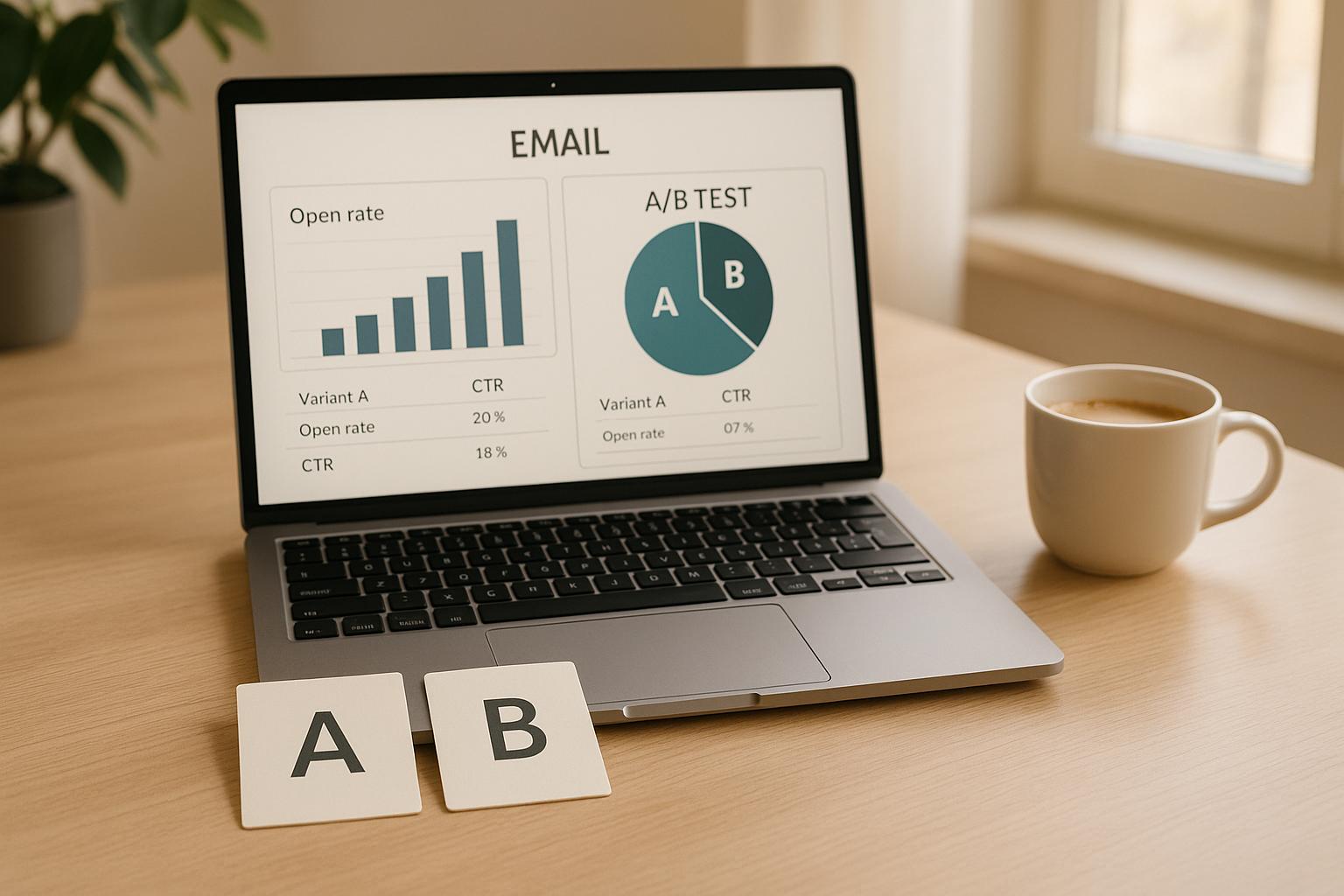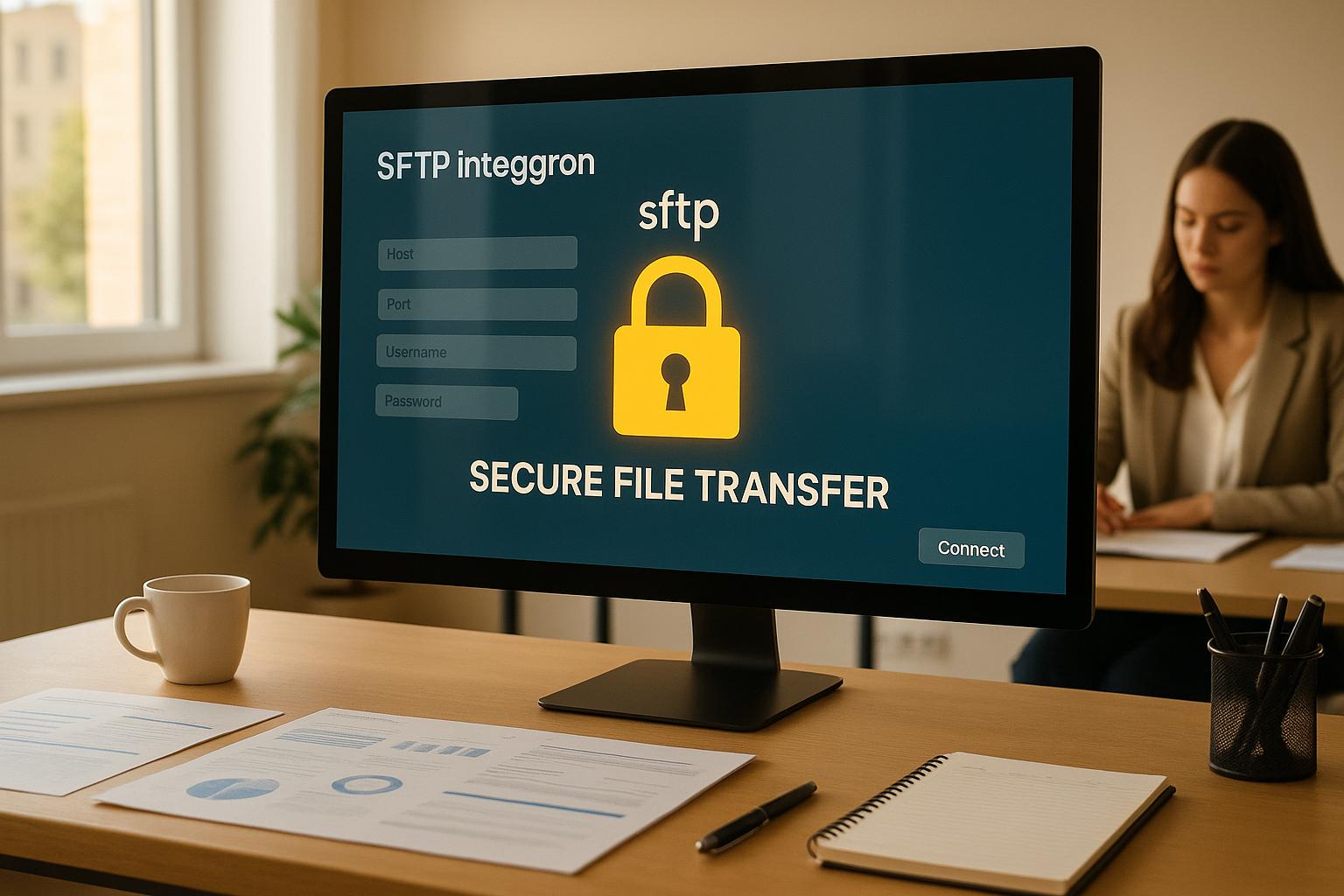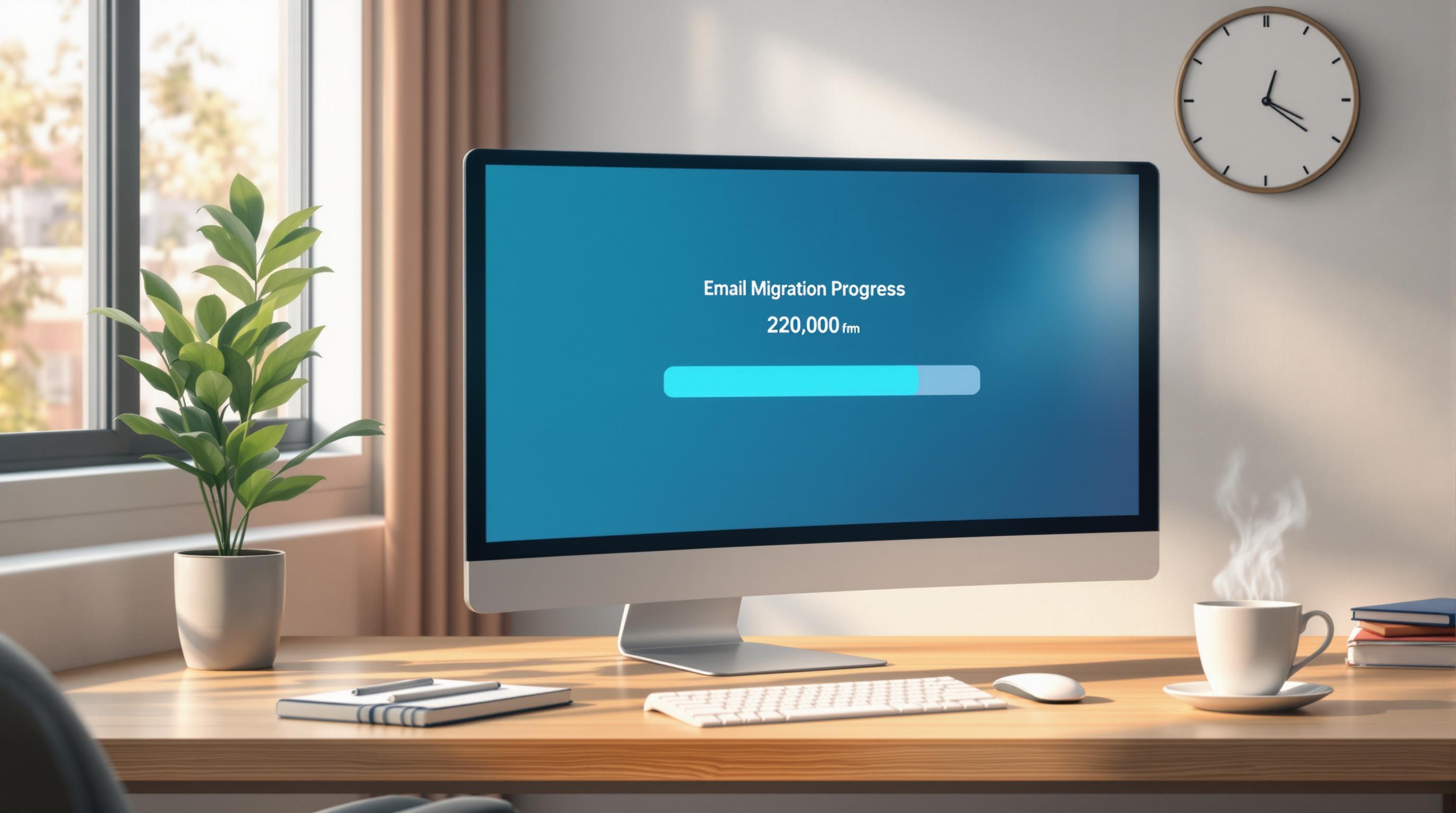Want better email open rates? Start with quality content.
- 42.35% is the current average email open rate (as of April 2025).
- 47% of users open emails based on the subject line alone.
- Personalized subject lines can boost open rates by 29.3%.
- Emails with polished preheaders see open rates rise to 25.83%.
To stand out in crowded inboxes, focus on these essentials:
- Write short, engaging subject lines (38-50 characters).
- Personalize emails with recipient names or tailored offers.
- Use urgency and emojis sparingly to grab attention.
- Optimize preview text to highlight value in 50-90 characters.
- Maintain a consistent brand voice for trust and recognition.
Pro Tip: Timing matters - send emails during working hours and avoid overwhelming your audience.
Want to go deeper? Learn how top brands like Starbucks and Flight Centre use data-driven personalization to boost open rates and revenue.
How to Boost Your Email Open Rates
Email Open Rates Basics
As of April 22, 2025, the average email open rate stands at 42.35%. This figure reflects how well your emails are engaging your subscribers.
What Are Open Rates?
An email open rate measures the percentage of recipients who open a specific email compared to the total number of recipients. Here’s the formula:
Open Rate = (Total unique opens ÷ (Total recipients - Bounced emails)) × 100
Understanding this metric is crucial for evaluating the effectiveness of your email campaigns.
Factors That Influence Open Rates
Several key elements can impact how often your emails are opened:
- Timing and Frequency: Sending emails during working hours increases visibility while avoiding overwhelming your subscribers.
- Subject Line Quality: Subject lines that are short (under 40 characters), personalized, and use numbers or action-oriented language tend to perform better.
- Sender Reputation: A strong sender reputation ensures higher deliverability. Regularly cleaning your email list and keeping your audience engaged helps maintain this crucial factor.
By paying attention to these variables, you can better align your email strategy with industry benchmarks.
Average Open Rates Across Industries
Email open rates vary significantly by industry, as shown below:
| Industry | Average Open Rate |
|---|---|
| Religion | 59.70% |
| Hobbies | 53.33% |
| Non-profit | 53.21% |
| Photo and Video | 52.01% |
| Sports | 49.83% |
| Healthcare | 44.60% |
| E-commerce | 31.08% |
| Travel | 22.57% |
These differences highlight the importance of benchmarking your email performance against your specific industry. For example, a 35% open rate might be underwhelming for a non-profit but excellent for an e-commerce business.
"Open rates are particularly important when testing new email marketing strategies or subject lines. They provide immediate feedback on our audience's first impression and help us to quickly iterate on and refine our approach." - Marc Bishop, Director, Wytlabs
Content Quality Effects on Open Rates
The quality of your email content directly influences how your audience engages with it. A well-crafted subject line is especially important - it’s your first chance to grab attention and entice recipients to open the email.
Subject Line Best Practices
A strong subject line can dramatically improve open rates. In fact, personalized subject lines can increase open rates by as much as 29.3%. Here are some tips to make yours stand out:
- Keep it the right length: Aim for subject lines between 61-70 characters for the best performance. If you want to ensure they display properly across all devices, stick to 38-50 characters.
- Add urgency: Subject lines that create a sense of urgency or importance tend to see a 22% higher open rate.
- Use visual cues: Including emojis can make your subject lines more eye-catching and boost open rates by up to 56% compared to plain text.
These practices set the stage for deeper engagement, especially when combined with personalized content.
Content Personalization Methods
Personalization doesn’t just make emails feel more relevant - it can also drive results. Studies show that personalized campaigns can increase revenue by 15%. For example, NA-KD, a prominent European retailer, achieved a 72X ROI and boosted customer lifetime value by 25% through tailored email strategies.
Another great example is Flight Centre, which uses personalization effectively by:
- Pulling data from email interactions, social media, and internal systems
- Creating customer segments based on specific interests
- Sending customized vacation offers through automated email journeys
When done right, personalization transforms email campaigns into experiences that resonate with individual recipients.
Brand Voice Guidelines
A consistent brand voice doesn’t just make your emails recognizable - it can also increase revenue by up to 23%. Here’s how a strong, unified voice impacts email marketing:
| Brand Voice Element | Impact on Email Marketing |
|---|---|
| Recognition | Makes your emails instantly familiar to readers |
| Trust | Builds credibility, with 81% of consumers saying trust is essential before making a purchase |
| Engagement | Reduces unsubscribe rates by up to 26% |
| Frequency | Helps manage the balance between staying visible and avoiding fatigue |
To keep your brand voice consistent:
- Document tone and style guidelines for your team.
- Ensure messaging remains uniform across platforms.
- Align your call-to-action phrases across campaigns.
- Stick to a cohesive language style in all communications.
sbb-itb-6e7333f
Methods to Boost Open Rates
Writing Effective Subject Lines
Crafting the perfect subject line is key to grabbing attention and improving open rates. Small, actionable tweaks can make a big difference. Here are some proven strategies backed by data:
| Element | Best Practice | Impact |
|---|---|---|
| Length | 7 words (41 characters) | Easier to read |
| Personalization | Include recipient's name | 10-14% increase in opens |
| Emoji Usage | Single emoji + text | 20.45% open rate |
| Urgency | Use time-sensitive language | Boosts engagement |
A great example comes from Warby Parker with their subject line: "Uh-oh, your prescription is expiring." It combines urgency with relevance, encouraging immediate action.
Using Data for Personalization
Personalization goes beyond just using a name - it’s about tailoring content to resonate with each subscriber. Leveraging data effectively allows you to create emails that feel custom-made for the recipient. Here’s how Starbucks does it:
- Tracks purchase history through loyalty programs.
- Analyzes mobile app usage patterns.
- Monitors social media interactions.
- Uses location data for store-specific promotions.
This kind of data-driven personalization pays off. Emails tailored to individual preferences see 29% higher open rates and 41% better click-through rates. In fact, McKinsey research highlights that 71% of consumers expect companies to deliver personalized experiences.
Preview Text and Design Tips
Once you’ve nailed the subject line and personalized the content, optimizing preview text and email design can further improve open rates. Preview text is especially powerful - 24% of subscribers read it before deciding whether to open an email. Done right, it can increase open rates by over 30%.
Here’s how to make the most of preview text:
| Component | Recommendation | Example |
|---|---|---|
| Length | 50-90 characters | Ensures visibility across devices |
| Content Style | Action-oriented | "Discover your exclusive member discount" |
| Value Proposition | Clearly state the benefit | "Save 25% on your next purchase" |
| Mobile Optimization | Front-load key details | Critical info appears first |
Grammarly is a standout example of this. Their preview text emphasizes urgency while clearly outlining the benefits of their premium plan, creating a compelling reason to open the email.
Email Content Optimization Tools
To transform great content into measurable results, it's essential to use email tools that simplify optimization and track performance effectively.
Email Marketing Platform Selection
Choosing the right email marketing platform can make a big difference in how well your content performs and how often your emails are opened. Look for platforms with these key features:
| Feature Category | Benefit | Features |
|---|---|---|
| AI-Powered Tools | Improves subject line creativity and personalization | Subject line generation, personalized content |
| Analytics Suite | Delivers real-time performance insights | Open rate tracking, engagement metrics |
| A/B Testing | Fine-tunes email elements for better results | Test subject lines, preview text, and content variations |
| Mobile Optimization | Ensures emails look great on any device | Responsive design for mobile compatibility |
Businesses that leverage advanced email optimization tools report an average open rate of 26.64%.
"The ability to ingest data from your ecommerce platform and all other third-party apps is crucial. If you don't have all of the data on your subscribers in one place, you aren't able to effectively deploy an email segmentation and personalization strategy." – Brandon Amoroso, founder of Electriq.
Selecting the right platform is just the start - tracking performance consistently is equally important.
Performance Tracking Tools
Modern tracking tools provide deep insights into subscriber behavior and the success of your campaigns. For example, Creality, a prominent 3D printing company, achieved a 54% open rate by using tracking and optimization tools, resulting in €560,000 in additional sales.
Here are some key metrics to monitor:
| Metric | Benchmark | Action Items |
|---|---|---|
| List Decay Rate | 25.74% annually | Clean your list regularly and run re-engagement campaigns |
| Mobile Opens | 61% of total | Use mobile-first designs to enhance engagement |
| Automation Success | 84% adoption | Set up behavioral triggers for automated emails |
| Segmentation Impact | 90% improvement | Develop targeted content groups for better relevance |
"Reporting is a must-have. To have a platform that helps clearly and accurately show your results without jumping through a million hoops adds tons of value." – Morgan Mulloy, director of retention marketing at Avex Designs.
Enhance your tracking efforts with these strategies:
-
Automated Performance Monitoring
Use tools to automatically track key metrics and set up alerts for any significant changes in open rates or click-throughs. -
Engagement Analysis
Analyze subscriber behavior, such as the best days and times to send emails, to improve your timing strategy. -
Content Performance Tracking
Evaluate which content elements resonate most with your audience. Data-driven content optimization has proven to deliver impressive ROIs - up to 4400%, or $44 earned for every $1 spent.
Conclusion
Creating high-quality content is key to improving open rates and standing out in today’s crowded inboxes. A well-thought-out content strategy not only grabs attention but also builds meaningful connections with your audience.
The numbers back this up: while the average email open rate sits at 21.5%, only 2.3% of recipients click through to take action. However, companies that focus on delivering top-notch content see conversion rates soar by 30%.
But it’s not just about open rates. Modern engagement techniques can take your email performance to the next level. For example, video content can be a game-changer - viewers retain 95% of a video’s message compared to just 10% for text. And with 81% of consumers checking emails on their smartphones, mobile optimization is no longer optional; it’s a must.
FAQs
How does personalizing email content improve open rates and engagement?
Personalizing email content can make a big difference in how your audience interacts with your messages. By including elements like the recipient's name or tailoring content to their preferences or past behavior, your emails feel more relevant and engaging.
The results speak for themselves. Emails with personalized details see open rates that are up to 29% higher compared to generic messages. Plus, they often lead to a clear boost in click rates, proving that when people feel understood, they’re more likely to respond. Beyond improving campaign performance, this strategy helps build stronger customer loyalty and trust in your brand.
How does timing impact email open rates, and how can I find the best time to send emails?
Timing plays a crucial role in boosting email open rates. Research shows that emails sent during working hours, particularly between 10:00 AM and 3:00 PM, often get better engagement. Midweek days like Tuesday and Thursday tend to be especially effective, as these are times when people are more likely to check their inbox. Within the day, mornings (9:00–11:00 AM) and early afternoons (1:00–3:00 PM) are ideal windows for grabbing attention.
To find the perfect timing for your audience, dig into your past email performance and look for patterns in engagement. You can also experiment with A/B testing by sending emails at different times to see what resonates best. By analyzing the data and refining your approach, you can pinpoint the timing that works for your audience and improve your open rates.
Why is it important to have a consistent brand voice in email marketing, and how does it impact subscriber trust and engagement?
A consistent brand voice in email marketing is key to building trust and keeping your subscribers engaged. It gives your business a clear identity that stands out and helps form a connection with your audience. When your emails consistently reflect the same tone and style, it strengthens your credibility and makes your brand feel dependable and relatable.
Sticking to a consistent tone shows that you understand what your audience likes and value their preferences. This can encourage them to engage with your content more actively. Over time, this trust and interaction can grow into lasting customer relationships and even drive revenue. A well-defined brand voice ensures your emails click with your audience, increasing the chances they'll open, read, and take action.


